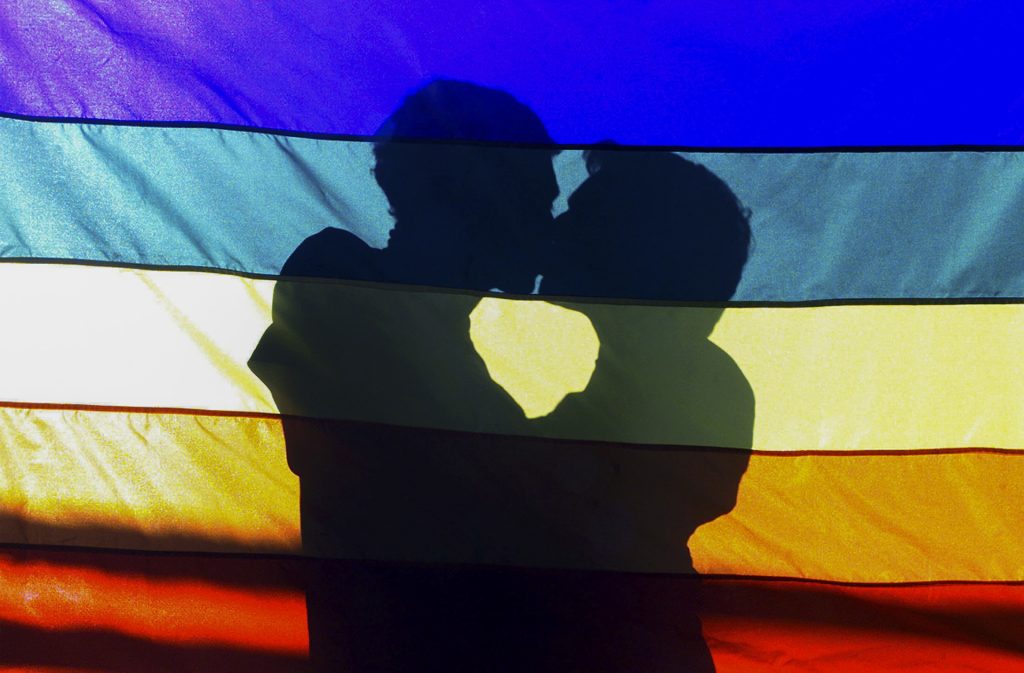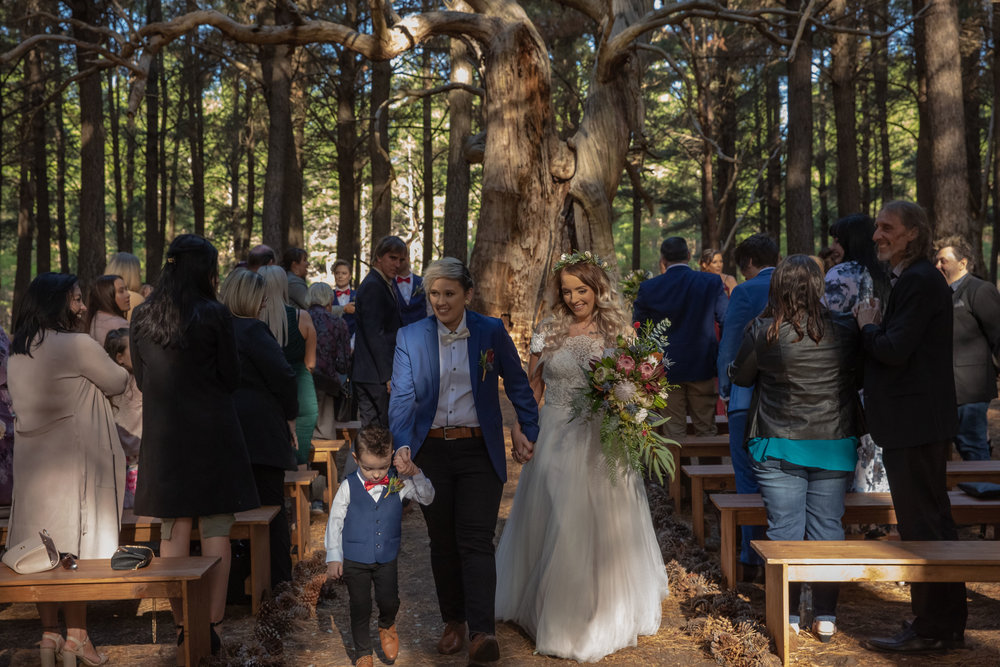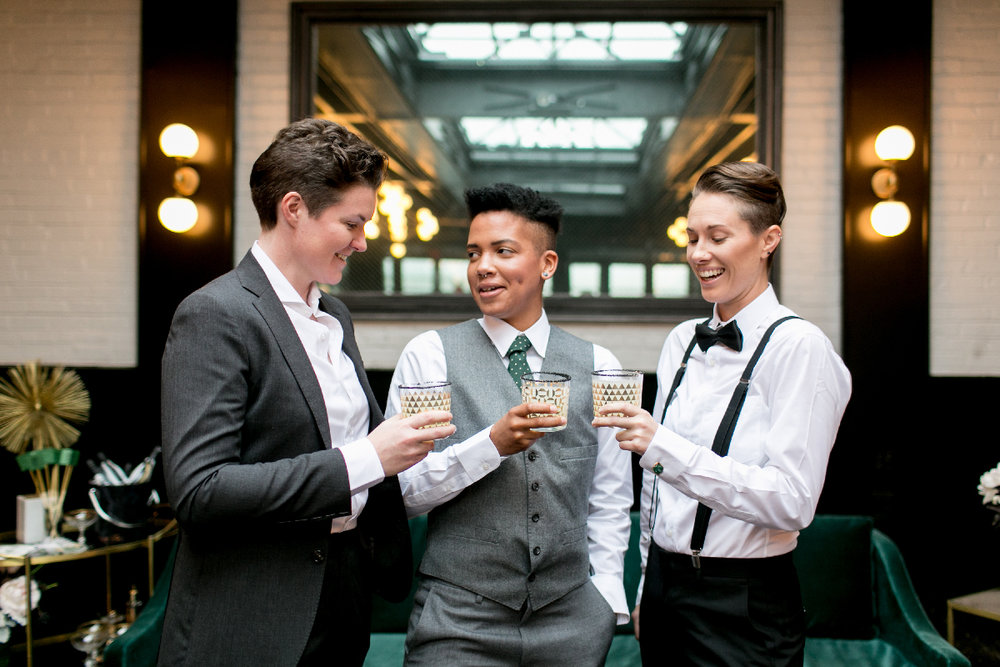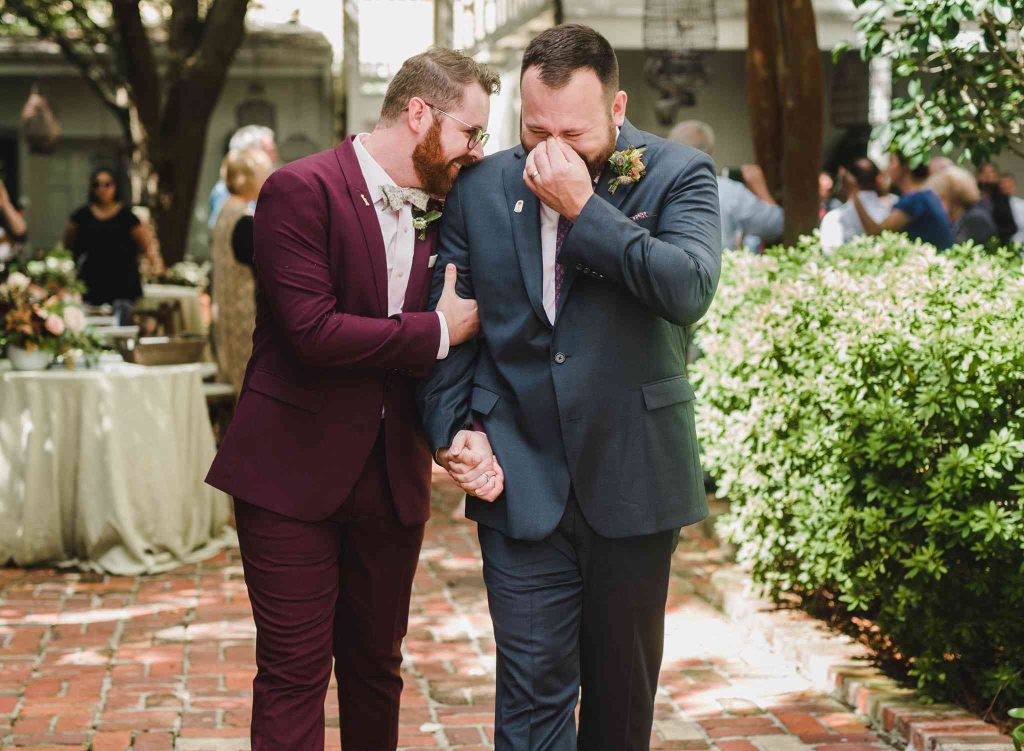
YOU BETTER KNOW: QUESTIONS ABOUT LGBTQ WEDDING TERMINOLOGY
- LGBTQ Pride
-
Apr 10
- Share post

In this article educator Kathryn Hamm, publisher and co-author of the groundbreaking book “The New Art of Capturing Love: The Essential Guide to Lesbian and Gay Wedding Photography.” answers some questions about LGBTQ wedding terminology.
For the past six years Kathryn Hamm’s been working closely with wedding pros in the family via webinars and conferences. And although the marriage equality landscape and technology available to small businesses has changed dramatically over the course of that time, the most popular questions she receives from pros who want to improve their service offerings to same-sex couples and the larger LGBTQ community have not.
“Do gay couples typically have a ‘Bride & Groom’ or is it ‘Bride and Bride’ or ‘Groom and Groom’? What is the correct term to use for same-sex couples?”
In fact, has been one of the most popular questions she’s received over the years. Language is incredibly important in marketing materials (a proactive effort) and in speech (a receptive and service-oriented effort). One of the reasons this question persists is because there is no one-size-fits-all answer, although there are some general best practices to follow.
One of biggest pet peeves for all couples in the wedding industry is the intensity of the heteronormative, gender-role driven expectations in planning and in the ritual itself. Truly, this limits non-LGBTQ couples as much as it limits LGBTQ couples. In our ideal world, each couple has the opportunity to participate equally in the commitment ritual that is most meaningful and reflective to them. Period.
That said, we offer this short answer to your question: the correct terms to use with a same-sex couple are the terms they themselves prefer. If you aren’t sure because, in your eyes, they appear to falling into a pattern you recognize as a ‘bride role’ and a ‘groom role,’ please ask them how they wish to be addressed and/or how they are referring to the event and their “roles” in it. Never, ever, ever, ever, never ask a couple: “Which one of you is the bride and which one of you is the groom?”
The majority of couples identify as “two brides” or “two grooms,” but this is not always the case. Sometimes couples might get creative with their language (eg, appropriating the term ‘bridegroom’ to mean something a bit more non-binary) and some might choose to go with “bride and groom” and be queer-identified. Just don’t assume.
Please also do your best not to overthink the issue. Be open. Be inclusive. Be welcoming. Be curious. Ask the couple about how they met. What they hope for in their wedding day. How you can best help and support them. And be sure to ask if they have any additional concerns about which you might not have inquired. Finally, be sure to give the couple permission to give you feedback if you’ve made a mistake in the language or approach you are using. Open communication and building relationships is everything.

“Typically I would ask, ‘what is your bride or groom’s name?’ Lately, I’ve been in the habit of asking, ‘what is your spouse’s last name?’ …Is that a good idea?
While some folks talk about using ‘spouse’ as neutral language — which it is — the term is actually correct to use only after the couple has married. It describes a relation based on marriage (a change in legal status). So, if you are greeting an individual on the phone or in person and aren’t sure (and this goes for anyone, regardless of sexual orientation or gender identity), you can ask the name of their ‘partner.’ It’s the most pre-marriage neutral option, especially if you’ll be putting the word in writing. We tend to like language with a bit more style, however, you so might like other options such as “beloved,” “sweetheart” or “betrothed;” don’t be afraid to use language that matches your style.
One of the easiest to use — in speech only — is fiancée or fiancé. The term, which references a partner to which one is engaged originates from French and thus includes one ‘é’ to indicate a masculine form of the word (it references a male) and two ‘é’s to indicate a feminine form of the word (it references a female). Because both are pronounced the same when used in speech, you can imply the same thought (We’re asking about the person to whom you are engaged) without revealing which gender case you are using. Thus, this technique won’t work in writing, but it’s a wonderful way to invite further conversation in an inclusive and hospitable way.

“Can you please make some suggestions on language that can be used in contracts? One contract, all-inclusive language? Different contracts, specific language? How do I start?”
Bernadette Smith of the Gay Wedding Institute encourages wedding pros to develop one contract that’s fully inclusive and doesn’t make any assumptions about what combination of services any couple might need.
We do think that this is the overriding best practice for inclusivity — and, for what it’s worth, this is not just about being LGBTQ-inclusive. These contract updates can also include being inclusive of straight men in the process, as well as non-white couples. The industry has a lot of work to do to break its “bridal bias” (which also leans heavily white). But, we digress…
When it comes to contract and work with any couples, we really appreciate a fully personalized approach. This may mean different things for different service categories because the contract a florist prepares is different from a contract a planner might use is different from a contract a photographer needs. In an ideal world, we envision a process where a wedding pro has had a chance to meet with the couple and understand who they are, the language they use, and what their needs are. From there, a contract would be developed to suit them personally. Granted, there may be a need for standard language around certain terms, thus those “evergreen” pieces can be developed with inclusivity and universality in mind. Where pros can offer something other than a generic template and develop, with the couple’s input, a contract that is reflective of them, all the better.

“The word ‘Queer’… what does that mean? I always think of that word as negative slang.”
Use of the word ‘queer’ has been used with increased frequency over the past few years. And, the questioner is correct. ‘Queer’ was used as a derogatory term to describe LGBTQ persons (or as a general insult) for much of the last century. But, like many derogatory terms, the community against which it has been used has reclaimed use of the word.
The most recent use of the term is one that is quite brilliant in its simplicity, even if it does take some time to get used to it. To use ‘LGBT couples’ means that you are talking about more than same-sex couples. You are talking about couples who may be identified as lesbian, bisexual, gay, and/or transgender. Some who identify as bisexual or transgender may also have hidden identities and appreciate LGBTQ cultural competence but would excluded from the term ‘same-sex wedding’ if they are an opposite-sex identified couple. Further, there are also some members of the LGBTQ community who identify as “genderqueer” or “genderfluid” or “nonbinary;” that is, they have a less fixed, less male/female construct of their gender identity. These latter couples are the ones who are likely to face the most struggle in the industry because of the overwhelming “bride-groom” and heavily gendered habits of society and the wedding industry.
So, what we love about use of the term ‘queer’ is that it’s a short word to describe the whole of our community. It efficiently picks up on the intersection of expressions of sexual orientation (gay, lesbian, bisexual, etc) and gender identity (transgender, gender fluid, etc) and all of the additional gradients our community might express and offers us a meta-description in a five letter word rather than a variable alphabet soup (eg, LGBTTQQIAAP — lesbian, gay, bisexual, transgender, transsexual, queer, questioning, intersex, asexual, ally, pansexual).
It’s important to understand this because Millennials (who represent the bulk of the engaged couples today) tend to use this term quite comfortably and with far more frequency than GenXers or Boomers. It may not be appropriate for a cisgender, heterosexual wedding pro to initiate referencing a person or couple as “queer,” but that pro should certainly reflect that language back to the couple if this is how they prefer to be recognized. Additionally, for some professionals who do more creative, boundary pushing, and highly personalized work with couples, it’s worth considering an update to your language to use “LGBTQ” and reference “queer” or “genderqueer” couples if you, in fact, are truly ready to serve them. (And if you can’t say “queer” out loud comfortably or still aren’t sure what genderqueer means, you aren’t ready. Keep reading and learning until you are!)
